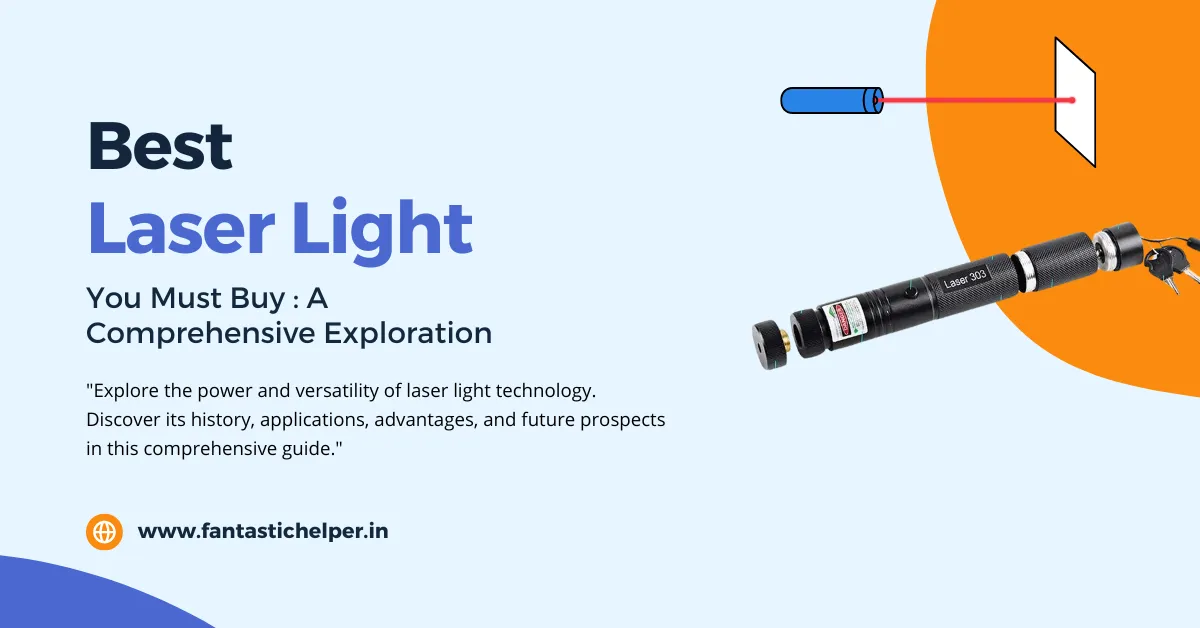Exploring the Power and Potential of Laser Light
Best Laser Light:
Laser light, a remarkable phenomenon of modern science, has revolutionized countless fields with its precision and versatility. Let’s delve into the fascinating world of laser light, understanding its history, applications, advantages, challenges, and future prospects.
Introduction to Laser Light
Laser, an acronym for Light Amplification by Stimulated Emission of Radiation, is a concentrated beam of coherent light. Unlike ordinary light sources, laser light consists of photons moving in unison, resulting in a powerful, focused beam.
History and Development
The concept of laser light was first proposed by Albert Einstein in 1917, but practical laser devices were only developed in the 1960s. Theodore H. Maiman built the first working laser in 1960, using a synthetic ruby crystal to produce red laser light. Since then, scientists have made tremendous strides in refining laser technology, leading to its widespread adoption across various industries.
How Laser Light Works
Basic Principles
Laser light is produced through a process called stimulated emission. When atoms or molecules are excited by an external energy source, such as an electrical current or another light source, they emit photons of light. These photons stimulate nearby atoms to emit more photons, creating a cascade effect that produces a coherent beam of laser light.
Emission of Light
Unlike conventional light sources, which emit light in multiple directions and wavelengths, laser light is highly directional and monochromatic, meaning it consists of a single color or wavelength. This coherence enables laser light to travel long distances without dispersing, making it ideal for various applications.
Types of Lasers
Laser devices come in various types, each tailored to specific applications.
Gas Lasers
Gas lasers, such as helium-neon and carbon dioxide lasers, use a gas-filled tube as the lasing medium. These lasers are widely used in scientific research, telecommunications, and barcode scanners.
Solid-State Lasers
Solid-state lasers utilize a solid crystal or glass as the lasing medium. Examples include neodymium-doped yttrium aluminum garnet (Nd:YAG) and erbium-doped fiber lasers. Solid-state lasers are employed in laser cutting, welding, and medical surgeries.
Semiconductor Lasers
Semiconductor lasers, commonly known as diode lasers, rely on semiconductor materials like gallium arsenide to produce laser light. They are prevalent in consumer electronics, optical storage devices, and laser pointers.
Applications of Laser Light
Laser technology finds myriad applications across diverse industries.
Medical Applications
In medicine, lasers are used for surgeries, dermatology procedures, vision correction, and cancer treatment. Laser therapy offers precise, minimally invasive solutions with faster recovery times.
Industrial Applications
In industry, lasers are employed for cutting, welding, engraving, and 3D printing. Laser machining techniques provide high precision and efficiency, enhancing manufacturing processes.
Military and Defense Applications
The military utilizes lasers for range finding, target designation, weapons guidance, and communication. Laser weapons systems offer advantages such as speed-of-light targeting and reduced collateral damage.
Advantages of Laser Light
The benefits of laser light include precision, versatility, efficiency, and speed. Laser technology enables intricate tasks with unparalleled accuracy, making it indispensable in numerous fields.
Challenges and Limitations
Despite its advantages, laser technology faces challenges such as high costs, safety concerns, and environmental impact. Additionally, achieving reliable laser performance in extreme conditions remains a technological hurdle.
Recent Technological Advancements
Recent advancements in laser technology include the development of ultrafast lasers, quantum cascade lasers, and laser-based spectroscopy techniques. These innovations expand the capabilities of laser systems, opening new avenues for research and applications.
Future Prospects
The future of laser technology holds promise for further advancements in miniaturization, efficiency, and integration with other technologies. Emerging areas such as quantum computing, photonics, and laser-driven fusion offer exciting possibilities for the future of laser science.
Safety Concerns
While laser light offers numerous benefits, it also poses safety risks if not handled properly. Exposure to high-power laser beams can cause eye injuries, skin burns, and other health hazards. Therefore, strict safety protocols and protective measures are essential when working with lasers.
Environmental Impact
Laser technology has environmental implications, primarily related to energy consumption and waste disposal. Efforts are underway to develop eco-friendly laser systems and recycling methods to mitigate the environmental footprint of laser technology.
Best Laser Light You Must Buy in 2024 : A Comprehensive Exploration
*Click on the Picture for Price
*Click on the Picture for Price
*Click on the Picture for Price
Conclusion
In conclusion, laser light stands as a testament to human ingenuity and innovation. From its humble beginnings to its widespread applications in science, medicine, industry, and defense, laser technology continues to shape the world in profound ways. As we look ahead, the future of laser light holds boundless possibilities, driving progress and discovery across diverse domains.
FAQs
-
Are lasers harmful to the environment? Laser technology can have environmental impacts, primarily related to energy consumption and waste disposal. However, efforts are underway to develop eco-friendly laser systems and recycling methods to mitigate these concerns.
-
What are some common medical applications of laser light? Laser technology is used in various medical procedures, including surgeries, dermatology treatments, vision correction, and cancer therapy, due to its precision and minimally invasive nature.
-
What are the advantages of laser light in industrial applications? Laser technology offers high precision, efficiency, and speed in industrial processes such as cutting, welding, engraving, and 3D printing, enhancing productivity and quality.
-
What safety precautions should be taken when working with lasers? When working with lasers, it’s crucial to follow strict safety protocols, including wearing appropriate protective gear, avoiding direct exposure to laser beams, and implementing proper training and supervision.
-
What is the future outlook for laser technology? The future of laser technology holds promise for further advancements in miniaturization, efficiency, and integration with other technologies, driving innovation and progress across various fields.







